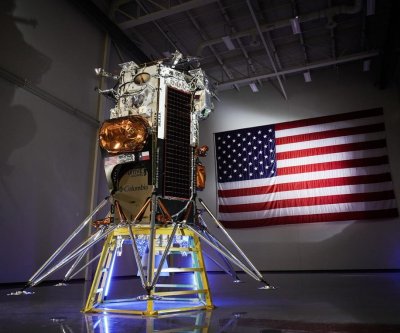Oct. 8 (UPI) — Private industry in the United States will have an opportunity to provide NASA with designs for a lander and vehicle that will help supply future Artemis missions to the moon.
NASA in September announced its request for proposals for lunar vehicle designs to overcome deficiencies in its lunar mobility and provide logistics that are needed to support planned missions to the moon’s surface.
“NASA relies on collaborations from diverse partners to develop its exploration architecture” and “leverage the incredible expertise in the commercial aerospace community,” NASA Deputy Associate Administrator Nujoud Merancy said.
NASA recently published two white papers that outline its needs for effective logistics support for its Artemis moon missions.
The space agency’s Cargo Lander Architecture white paper says lunar surface exploration requires the delivery of assets, equipment and supplies to the moon’s surface.
NASA says it has a limited capability to deliver supplies and crew aboard its Human Landing System and additional surface cargo lander capabilities are needed to effectively supply future moon missions.
The white paper says NASA needs all services that enable safe cargo deliveries from in-space transit to the moon’s surface for offloading.
The proposed Cargo Lander would need to provide any needed power, communications, data and thermal dissipation to ensure the lander is safe to approach and unload.
Another white paper entitled Lunar Mobility Drivers and Needs details the design needs for a lunar vehicle that supports exploration of sites that support scientific or strategic interests on the moon’s surface.
Once crews and cargo are in place, the mobility drivers support rapid movement to effectively explore the lunar surface and “maximize exploration returns,” according to NASA.
Movement requires cargo to be moved from its point of delivery to where it’s needed to support moon missions and exploration.
“Exploration systems will often need to support deployment of cargo in close proximity to other surface infrastructure,” the white paper says. “This cargo can range from the crew logistics and consumables … to science and technology demonstrations to large-scale infrastructure that requires precision relocation.”
NASA says it currently can deliver about 1,500 kilograms of cargo but will need larger cargo-carrying capabilities to effectively supply future moon missions at the points of use.
NASA engineers at the Johnson Space Center in Houston are designing a lunar rover prototype called the Ground Test Unit that the space agency wants to deploy on the Artemis V moon mission that is scheduled in March 2030.
Intuitive Machines, Lunar Outpost and Venturi Astrolab are helping NASA develop the new lunar rover.


